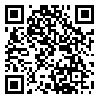BibTeX | RIS | EndNote | Medlars | ProCite | Reference Manager | RefWorks
Send citation to:
URL: http://tumj.tums.ac.ir/article-1-523-en.html
Background: The incidence of UTI in neonates varies between 0.1-1% and among febrile infant less than eight weeks of life, the incidence is 5-11%. During the first two months of life, males are more commonly affected possibly because of an increased incidence of structural abnormalities. The non-specific symptoms of UTI in neonates include fever, poor feeding, vomiting, jaundice and poor weight gain. The incidence of urinary tract abnormality in infants with UTI is about 30-55%. Sixty percent of term infants and 80% of preterm ineonates develop jaundice during the first week of life. This study evaluates the frequency of UTI in neonates with jaundice.
Methods: In a descriptive analytical study, urinary tract infection were studied in 100 icteric newborns and compared with 100 nonicteric ones. A questionnaire containing the medical history, clinical findings and the result of urine culture, was completed for each one.
Results: Eleven cases of 100 icteric neonates had UTI. Nonicteric neonates however showed no UTI at all. The difference between the two groups was statistically significant (p=0.001). Imaging investigations performed for all of the infected infants detected urinary tract abnormalities in three of them (27.27%). The two cases were male newborns that had unilateral vesicoureteral reflux (VUR) G I and the third one was a female newborn wtith VUR and hydronephrosis GIII.
Conclusion: UTI is common in icteric neonates and jaundice is one of the first signs of this infection, hence investigation of UTI in these newborn is important. We suggest that US and VCUG should be performed routinely after initial UTI particularly in male neonates.
| Rights and permissions | |
 |
This work is licensed under a Creative Commons Attribution-NonCommercial 4.0 International License. |





